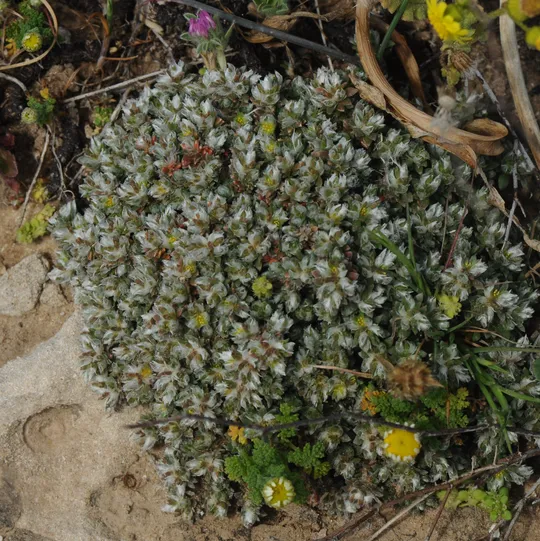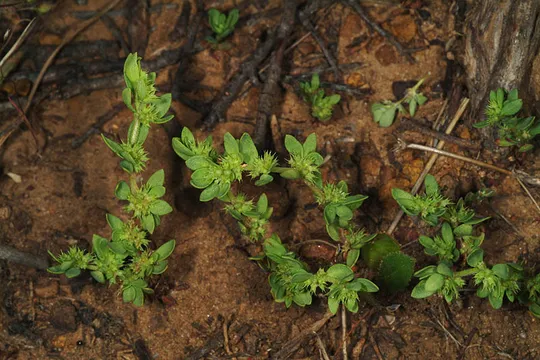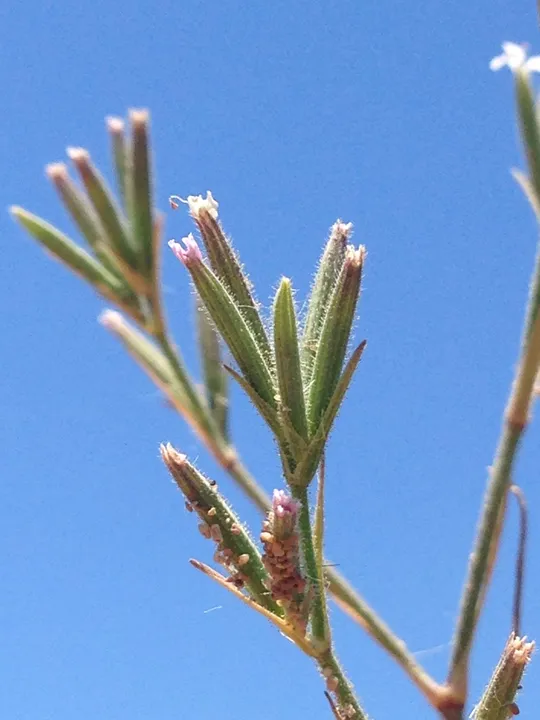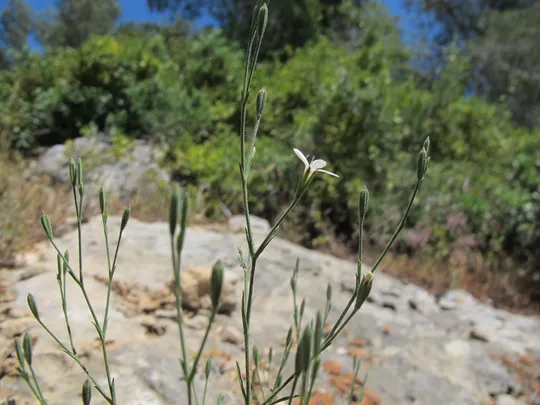Bufonia ramonensis
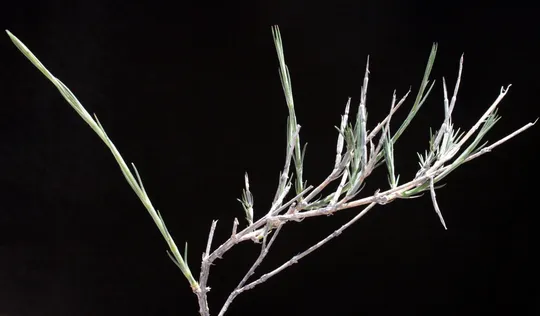
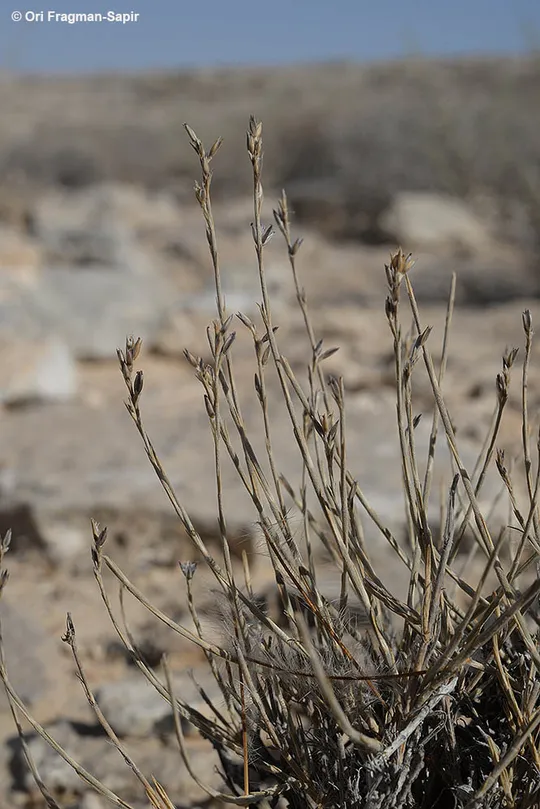
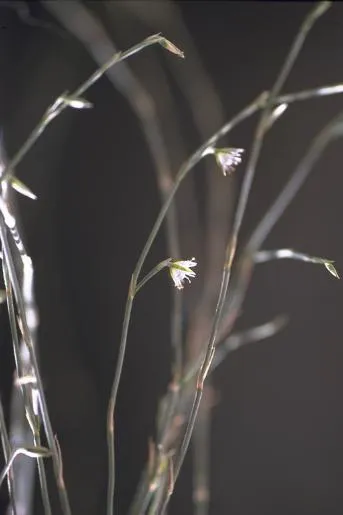
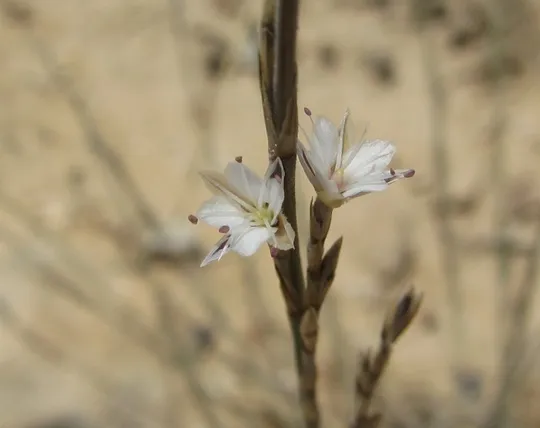
Bufonia ramonensis grows only in the Negev Highlands on a single site, two km southwest of Mount Romem and about 2 km east of Lots cisterns.
Rock crevices and soil pockets between limestone expanses on moderate northern gentle slopes, at an altitude of 975 meters (900 meters in the published paper) in the Negev Highlands. B. ramonensis grows in the Artemisia siberi and Moricandia nitens plant community.
The genus Bufonia includes 20 species whose main distribution is in the Mediterranean Basin and Western Asia, as well as in the Canary Islands. Seven species are found in Europe. The genus includes low annual and perennial species; many of them grow on rocks or in sunlit open areas with shallow soil. In the Levant (Syria, Lebanon, Jordan, Israel and Sinai), four species of Bufonia grow: B. virgata is the only annual, very rare and grows on Israel's central mountain range. B. ephedrina grows in Batha in Jordan and Syria-Lebanon. This species has smooth seeds and a calyx with seven veins. The plant is hairy at its base and smooth at the top. The closest species to B. ramonensis is Bufonia multiceps, which is endemic to the mountains of Southern Sinai where it grows in rock crevices and igneous cliffs at altitudes above 2,000 meters.
B. ramonensis is an important example of an endemic species that speciates in conditions of isolation and stress in remote desert mountains (Stebbins, 1952, Danin, 1999). It belongs to a group of localized endemic species that grow only in a single site with a tiny population, fragmented and distant from species that are systematically close to it (B. multiceps that grows in the mountains of Southern Sinai). This pattern can be interpreted as a new species at the beginning of its speciation or as a surviving species prior to its extinction (Willis, 1922).
• Bufonia ramonensis is found only in a single site, and the number of plants in the population has been estimated at between 200 and 300. Although no rare plant species survey was conducted in the Negev Highlands, the mountains of the region were intensively sampled for decades by leading botanists. Consequently, the chances of finding another population is very small, but exists.
• Most plants grow in rock crevices and in soil pockets on the slopes, so they are not at risk, but the site is located near a main highway, and there is a lot of military activity and hiking in the area.
• All the plants are in a single section extending over about 1 acre, which endangers the plants, whether by random extinction, grazing or human activity.
The Bufonia ramonensis population is located in the Negev Highlands Reserve, 2 km east of the Lots cisterns, very close to the main road. The area should be marked and signposted. Action should be taken to prevent overgrazing, all-terrain vehicles or mechanical operations. A detailed survey of the area should be conducted to try to locate more populations. The existing population should be monitored.
Endemic to Israel.
Bufonia ramonensis is a dwarf shrub, endemic to a single site in the Negev Highlands in the Ramon Reserve, east of the Lots water cisterns. Although the species is within a nature reserve, it has been given the highest red number (5.3) and declared, according to the IUCN criteria, a species in "grave danger". The reason for this is that not only is it endemic, but also a rare species whose population is small (200-300 plants) and isolated and whose eradication from Israel implies its global extinction.
Danin, A.1999. Desert rocks as plant refugia in the Near East. Bot.Rev.65(2), 93–170.
Danin, A. 2001. A new species of Bufonia (Caryophyllaceae) from Israel: B.ramonensis. Willdenowia 31:
95-100.
Current Occupancy Map
| 1000 squre meter pixel | 5000 squre meter pixel | 10000 squre meter pixel | |
|---|---|---|---|
| number of observations | 0 | 0 | 0 |
| in total pixels | 0 | 0 | 0 |
| Family | Caryophyllaceae |
| Classification | On the endangered species list |
| Ecosystem | Desert Mountains |
| Chorotype | Endemic (Western Irano – Turanian) |
| Conservation Site | The “Bufonia Site” near Mount Ramon |
| Rarity |
1
6
6
|
|---|---|
| Vulnerability |
0
0
4
|
| Attractiveness |
0
0
4
|
| Endemism |
0
4
4
|
| Red number |
1
5.3
10
|
| Peripherality | 0 |
| IUCN category | DD EW EX LC CR EN VU NT |
| Threat Definition according to the red book | Critically endangered |
 Based on:
Based on:
